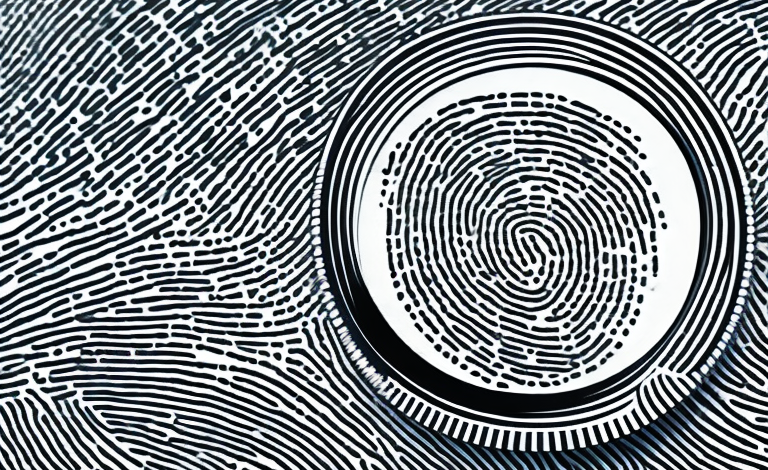Fingerprints are unique to each individual, making them one of the most reliable sources of identification. However, not all fingerprints are created equal. Some are more rare than others, and their identification and classification can provide important insights into forensic investigations. In this article, we’ll delve deeper into the science of fingerprint analysis and learn about the rarest fingerprints in history.
The Science of Fingerprint Analysis
Before we dive into the rarest fingerprints, it’s important to understand the basic science behind fingerprint analysis. A fingerprint is a pattern of ridges and valleys on the skin of the fingers, palms, and toes. These ridges and valleys are unique to each individual and can be used to identify a person with high accuracy.
When a person touches an object, they leave behind a trace of their fingerprints. These prints can be lifted off the object using specialized techniques and compared to known fingerprints in a database to identify the person who left the prints. Fingerprint analysis is a crucial tool for law enforcement agencies and is used to solve many types of crimes, from burglaries to murders.
One of the key factors that makes fingerprints unique is their complexity. The ridges and valleys on a fingerprint can vary in width, shape, and direction, creating a highly intricate pattern that is virtually impossible to replicate. Even identical twins, who share the same DNA, have different fingerprints.
Fingerprint analysis has come a long way since its early days, when investigators would simply compare prints by eye. Today, advanced computer algorithms are used to analyze and compare fingerprints, making the process faster and more accurate. However, despite these technological advancements, fingerprint analysis is still a highly specialized field that requires extensive training and expertise.
Understanding the Different Types of Fingerprints
There are three main types of fingerprints: arches, loops, and whorls. Arches are the least common type of fingerprint and are characterized by a ridge pattern that flows from one side to the other without any recurving. Loops are the most common type of fingerprint and have ridges that flow in a U-shape or a backward S-shape. Whorls are the second most common type and have ridges that form circular or spiral patterns.
It is important to note that fingerprints are unique to each individual and can be used for identification purposes. In addition to the three main types of fingerprints, there are also subcategories such as double loops, central pockets, and tented arches. These subcategories can provide further information about the individual’s fingerprint and can be useful in forensic investigations. It is also important to handle fingerprints with care, as they can be easily smudged or destroyed if not properly collected and preserved.
The Role of Genetics in Determining Fingerprints
While fingerprints are unique to each individual, they are also influenced by genetics. The patterns of ridges and valleys on an individual’s fingers are determined by their genes and can be passed down through generations. However, identical twins will have the same genes but may still have different fingerprints due to environmental factors during development.
Recent studies have also shown that certain genetic mutations can cause variations in fingerprint patterns. For example, a mutation in the SMARCAD1 gene has been linked to the absence of fingerprints in some individuals. This highlights the complex interplay between genetics and environmental factors in determining the unique characteristics of our fingerprints.
What Makes a Fingerprint Rare?
So what makes a fingerprint rare? There are several factors that can contribute to the rarity of a fingerprint, including the pattern of ridges and valleys, the number of ridges, and the overall size and shape of the print. Fingerprint rarity can be determined by comparing a particular print to a database of known prints and analyzing its unique characteristics.
Another factor that can contribute to the rarity of a fingerprint is the presence of any unusual characteristics, such as a delta or a bifurcation. These are points where the ridges of the fingerprint split or diverge, creating a unique pattern that is not commonly found in other prints. The rarity of a fingerprint can also be influenced by external factors, such as the condition of the skin or the quality of the ink used to make the print. All of these factors must be taken into account when analyzing the rarity of a fingerprint and its potential value in forensic investigations.
The Top 10 Rarest Fingerprints Found in History
While every individual has unique fingerprints, some prints are rarer than others. Here are the top 10 rarest fingerprints found in history:
- Twinned loop arc (TLA) – A rare combination of an arch and a loop pattern that is found in less than 0.001% of fingerprints.
- Central pocket loop (CPL) – A loop pattern with a distinctive pocket in the center that is found in approximately 0.02% of fingerprints.
- Double loop whorl (DLW) – A whorl pattern with two distinct loops that is found in approximately 0.035% of fingerprints.
- Accidental whorl (AW) – A whorl pattern that does not follow the standard whorl shape and is found in approximately 0.1% of fingerprints.
- Composite – A pattern that is a combination of two or more of the three main types of fingerprints and is found in approximately 0.8% of fingerprints.
- Highly complex whorl (HCW) – A whorl pattern that is highly intricate and detailed and is found in approximately 1% of fingerprints.
- Plain arch (PA) – An arch pattern with no discernible characteristics of other fingerprint types that is found in approximately 5% of fingerprints.
- Radial loop (RL) – A loop pattern that opens towards the thumb that is found in approximately 7% of fingerprints.
- Ulnar loop (UL) – A loop pattern that opens towards the little finger that is found in approximately 65% of fingerprints.
- Plain whorl (PW) – A whorl pattern that follows the standard circular or spiral shape that is found in approximately 30% of fingerprints.
While rare fingerprints are fascinating, they can also be useful in forensic investigations. For example, if a crime scene has a fingerprint with a highly complex whorl, it could be easier to identify the suspect since this pattern is so rare. Additionally, rare fingerprints can also be used to identify individuals with genetic disorders. For instance, individuals with Down syndrome often have a specific fingerprint pattern that is different from the general population.
It’s important to note that while these rare fingerprints are interesting, they are not the only factor used in identifying individuals. Other factors such as DNA analysis and facial recognition technology are also used in forensic investigations. However, the uniqueness of fingerprints remains a valuable tool in solving crimes and identifying individuals.
How to Identify Rare Fingerprints
Identifying rare fingerprints requires specialized training and expertise. Forensic analysts use advanced techniques to compare a particular print to a database of known prints and identify its unique characteristics. This process can help investigators link a suspect to a crime scene or exclude an innocent person from suspicion.
One of the advanced techniques used in identifying rare fingerprints is called superglue fuming. This involves exposing the print to superglue vapors, which react with the amino acids and other compounds in the print to create a visible white residue. This residue can then be photographed and analyzed to identify unique characteristics of the print, such as ridge patterns and minutiae. Superglue fuming is particularly useful for identifying prints on non-porous surfaces, such as glass or plastic.
The Future of Fingerprint Technology and Analysis
Advances in technology are constantly improving the accuracy and efficiency of fingerprint analysis. New techniques such as touch DNA analysis and facial recognition technology are making it easier than ever for law enforcement agencies to identify suspects and solve crimes. As technology continues to advance, the future of fingerprint analysis looks very promising.
One area of development in fingerprint technology is the use of 3D printing to create replicas of fingerprints. This can be useful in cases where the original print is distorted or damaged. Additionally, researchers are exploring the use of artificial intelligence to analyze fingerprints, which could lead to even more accurate and efficient identification methods. With these advancements, the future of fingerprint technology and analysis is poised to revolutionize the field of forensic science.
Advancements in Forensic Science and Fingerprint Analysis
Fingerprint analysis is just one of the many tools used by forensic scientists to solve crimes. Advances in forensic science such as DNA analysis, ballistics examination, and digital forensics are changing the face of criminal investigations. These techniques are helping investigators to solve crimes that were once thought to be unsolvable and bringing justice to victims and their families.
One of the most significant advancements in forensic science is the use of computer algorithms to analyze large amounts of data. This technique, known as machine learning, allows investigators to quickly identify patterns and connections between pieces of evidence that may have been missed by human analysts. Machine learning is particularly useful in cases where there is a large amount of digital evidence, such as in cybercrime investigations. As technology continues to evolve, it is likely that machine learning and other forms of artificial intelligence will play an increasingly important role in forensic science and criminal investigations.
How Fingerprint Analysis Helps Solve Crime Mysteries
Fingerprint analysis has played a crucial role in solving many high-profile crimes throughout history. From the Lindbergh kidnapping to the Watergate scandal, fingerprints have been instrumental in identifying suspects and proving guilt. By analyzing the unique characteristics of fingerprints, forensic analysts can help investigators build a case against a suspect and bring them to justice.
One of the key benefits of fingerprint analysis is its reliability. Unlike other forms of evidence, such as eyewitness testimony, fingerprints are unique to each individual and cannot be easily disputed. This makes them a valuable tool in courtrooms around the world, where they are often used to secure convictions and exonerate the innocent.
Another advantage of fingerprint analysis is its versatility. While most people associate fingerprints with criminal investigations, they are also used in a variety of other contexts, such as background checks, employment screenings, and even immigration applications. By providing a quick and accurate way to identify individuals, fingerprint analysis helps ensure public safety and security in a wide range of settings.
The Importance of Accurate Fingerprint Identification in Criminal Investigations
The accuracy of fingerprint identification is of utmost importance in criminal investigations. A misidentification could lead to an innocent person being convicted of a crime they did not commit, or a guilty person being acquitted. To prevent this, forensic analysts undergo extensive training and follow strict protocols to ensure accurate and reliable fingerprint analysis.
The Ethics of Fingerprint Collection and Analysis
While fingerprint analysis is an invaluable tool in criminal investigations, it can also raise ethical concerns. Collecting fingerprints without a warrant or consent can be seen as a violation of an individual’s privacy rights. Additionally, there have been cases where innocent individuals have been wrongly convicted based on faulty fingerprint analysis. It’s important to balance the need for accurate and reliable forensic evidence with the protection of individual rights and freedoms.
In conclusion, rare fingerprints can provide important insights into forensic investigations. By understanding the different types of fingerprints, the role of genetics in determining fingerprints, and the techniques used to identify rare prints, forensic analysts can help investigators to solve crimes and bring justice to victims and their families. As technology continues to advance and forensic science evolves, the future of fingerprint analysis looks very promising.



